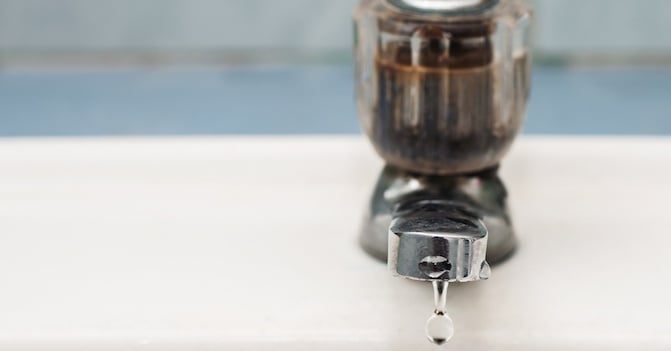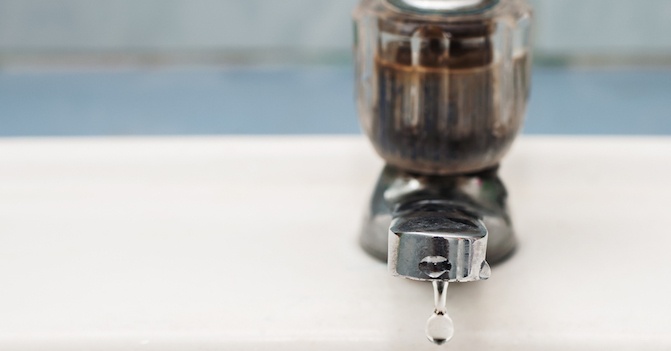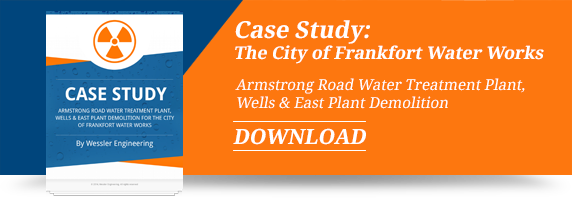
It wasn’t long ago that a simple bar of soap was regarded as the be-all and end-all solution to discourage children from using four-letter words, at least in the company of adults. If you have ever had the privilege of experiencing that sharp, bitter taste of a fresh bar of Irish Spring, then you know that nothing ever quite tastes the same again. Candy never tastes quite as sweet, soda never quite as fizzy and brushing your teeth becomes a much desired activity. One may conclude that a simple bar of soap is an effective means of eliminating four-letter words from a child’s vocabulary.
What if I told you there was a new four-letter word and soap and clean water does nothing to diminish its damaging effects on children? That four-letter word is LEAD…and it’s on the tip of the nation’s collective tongue. But where does lead come from and how does it infiltrate our drinking water? How can you detect and prevent lead exposure in your home? What are federal and state governments doing to protect drinking water systems? These questions, and more, are addressed below as we discuss lead and its presence in our drinking water systems.
How Does Lead Infiltrate Drinking Water Systems?
Lead, much like asbestos, was widely praised throughout much of the 20th Century for its cost-effective and beneficial contributions to the housing industry. Advertisements such as “the more home means to you…the more you’ll appreciate Dutch Boy protection,” an advertisement for Dutch Boy White Lead paint, were not uncommon throughout the early 1900s.
Also not uncommon in the early 1900s was the use of lead pipes for interior plumbing and, more recently, lead solder for joining interior copper pipe fittings. If your home was built prior to 1986, there is a good chance that your interior plumbing contains lead-based materials. Often times, when lead is detected in one’s drinking water, the source of lead can actually be traced back to lead pipes or lead solder present within the home.
So why aren’t more people affected by drinking water-based lead exposure? Over time mineral deposits build-up within a home’s interior plumbing. This mineral build-up acts as insulation, providing a layer of protection and preventing exposure to lead. In rare instances, drinking water substances such as corrosives, may be introduced into a drinking water system at levels significant enough to remove this mineral protection layer within the homes interior plumbing. Once this mineral deposit build-up has been removed due to corrosion, drinking water then becomes exposed to any lead-based material present within the homes interior plumbing. Corrosives, such as iron, may naturally be present in a water source, as was the case with the Flint River in the City of Flint, Michigan.
In short, in 2015 the source of Flint’s drinking water was the Flint River. The Flint River is high in iron, a corrosive substance. High concentrations of iron in the drinking water source went untreated and, over time, eroded protective mineral layers from interior plumbing amongst residences of Flint, Michigan. Residences, many built prior to 1986, that were constructed with interior lead pipes or lead solder then began leaching high concentrations (above federal action levels) of lead into residential drinking water, exposing a large population of children and adults to the toxic metal.
How Can You Detect and Minimize Lead Exposure Within Your Home?
The only way to identify high concentrations of lead in your drinking water system is to have your home’s tap water tested for lead. Dissolved lead travels through your drinking water undetected. Dissolved lead is odorless, colorless and tasteless.
Since replacing interior lead-based pipes and solder throughout your entire home may not be a cost-effective option, the Environmental Protection Agency (EPA) has provided the following steps to minimize your exposure to lead:
- Flush your pipes prior to consuming water. The more time water has been sitting in your home’s pipes, the more exposure it may have with lead. Anytime the water in a particular faucet has not been used for six hours or longer, flush your cold-water pipes by running the water until it becomes as cold as it will get. This may take as little as five to thirty seconds or it could take as long as two minutes. Contact your local water utility for information concerning flushing times.
- Only use cold water for consumption, such as drinking, cooking and especially for making baby formula. Hot water is likely to contain higher levels of lead. Flush water prior to consumption.
- If you own a private drinking water well, you may treat the water to make it less corrosive. Corrosion control devices and services for individual households are available. Contact your local health department or water utility for more information.
- Use a water filter or other treatment device. Many filters and other water treatment devices are certified by independent organizations for effective lead reduction. Devices that are not designed to remove lead will not be effective in minimizing exposure to lead.
How are Federal and State Governments Preventing Exposure to Lead?
EPA’s Lead and Copper Rule, issued in 1991, requires public water systems to control the corrosivity of water. The regulation also requires systems to collect tap samples from sites served by the system that are more likely to have plumbing materials containing lead. If more than 10 percent of tap water samples exceed the lead action level of 15 parts per billion, then water systems are required to take the following actions:
- Take further steps to optimize corrosion control treatment;
- Educate the public about lead in drinking water and actions customers can take to reduce their exposure to lead; and
- Replace portions of lead service lines (lines that connect distribution mains to customers) under the water system’s control.
The EPA and State regulatory agencies require all public water systems to prepare, deliver or otherwise make available an annual water quality report called a Consumer Confidence Report for their drinking water customers. For a copy of the most recent Consumer Confidence Report, please contact your local water utility.
The EPA requires all public water systems to alert drinking water costumers if there is a problem with the drinking water source.
For more information on lead in drinking water, testing methods and steps you can take to minimize exposure, please contact the Safe Drinking Water Hotline at (800) 426-4791 or visit their website at http://www.epa.gov/your-drinking-water/basic-information-about-lead-drinking-water.
Tags


